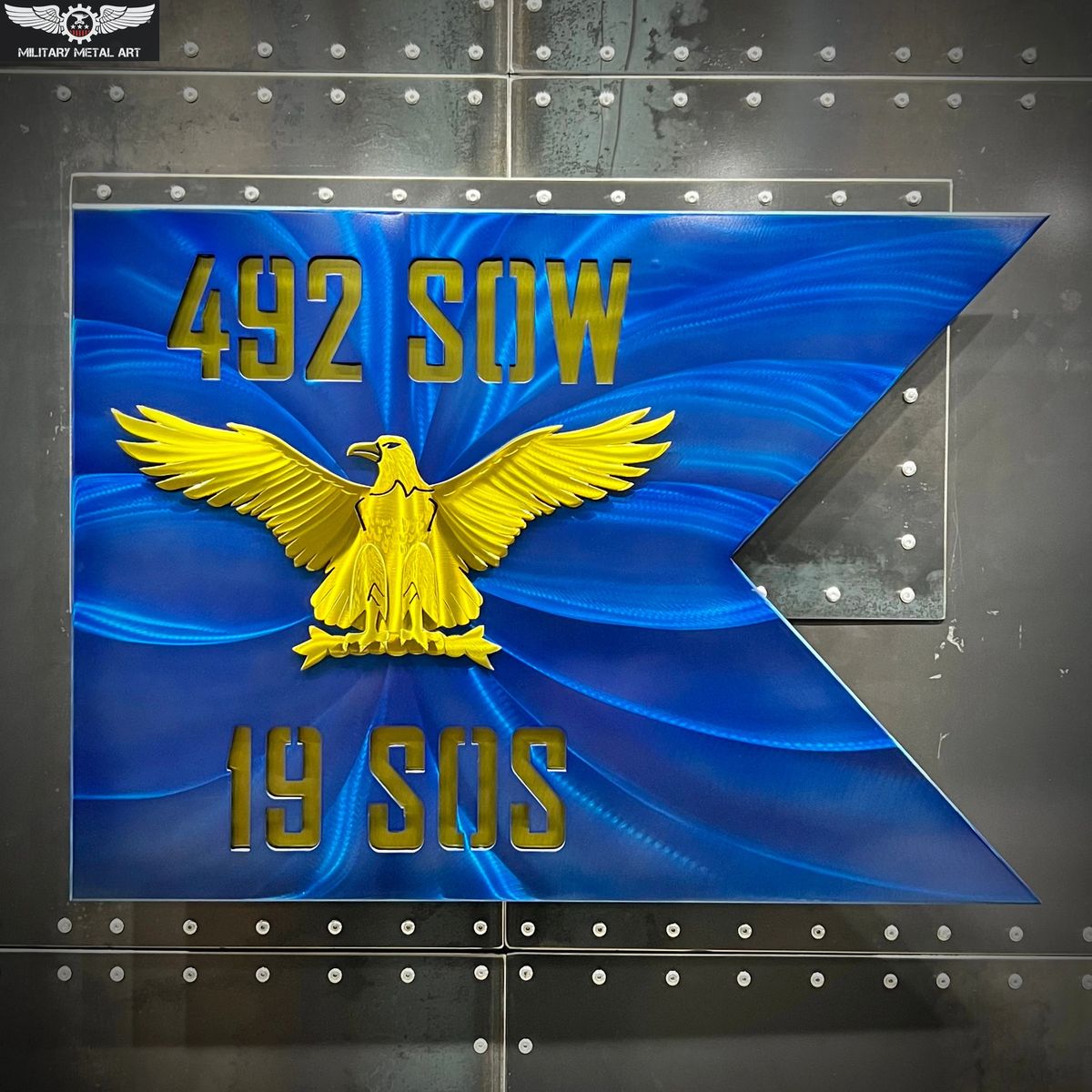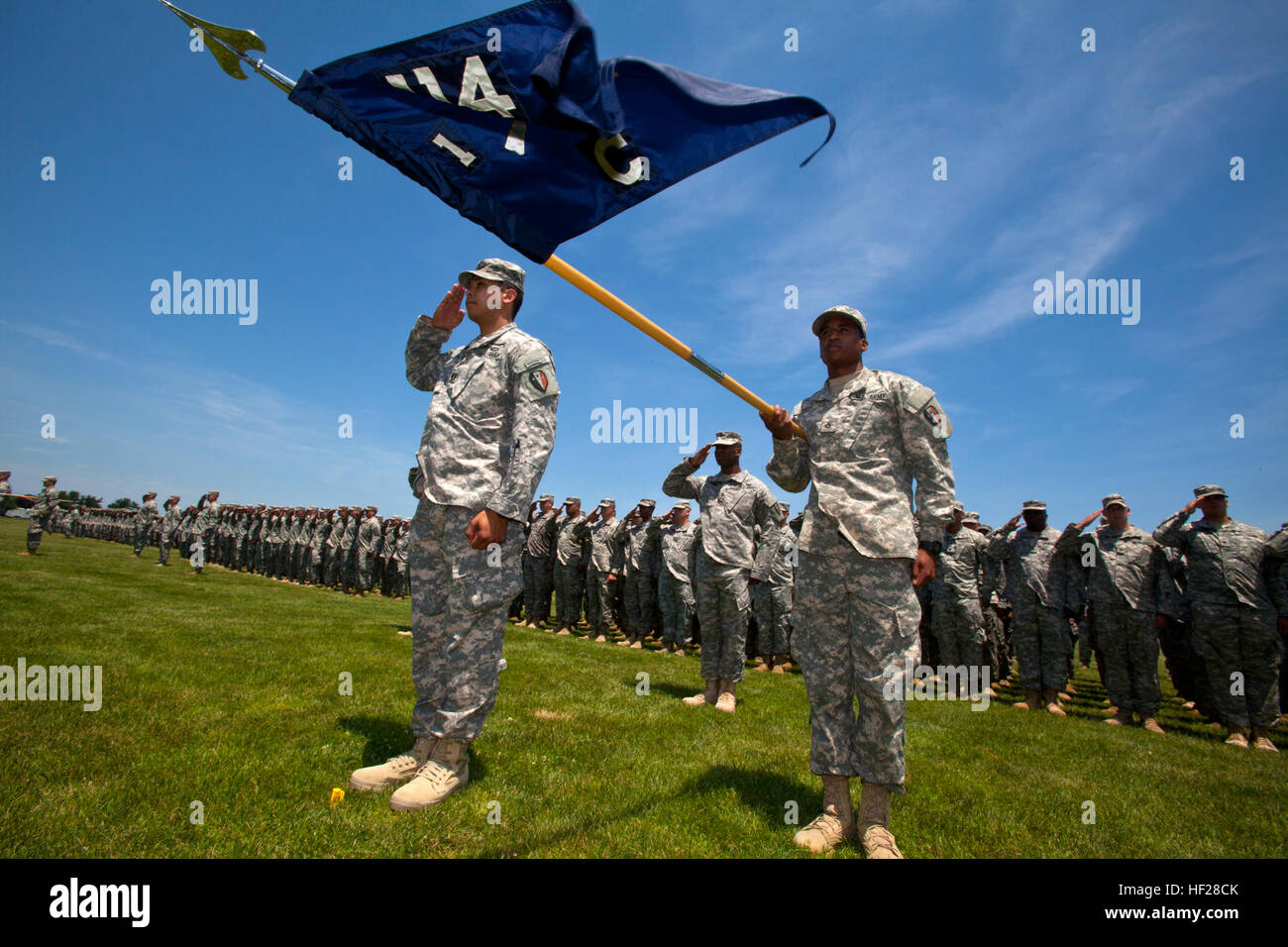Military Guidon - As you probably know, an ensign represents a unit and its commander. As you probably know, when a commander is in an office or building, their insignia is displayed for all to see, and when the day is done, it is retired at night. Shields are part of military culture, but you might be surprised to learn about their history. Let's take a look at how ensigns have become part of our military and their storied history. Passing the team flag is an important step in a duty handover ceremony or a command handover ceremony, and a key sign that something important is happening.
If you've been on a military installation for any length of time, chances are you've seen this ceremony (or something similar). Four people stood in formation, with a porter in front of them. The flag bearer is usually a senior private or first sergeant of a unit, and this person usually stands behind three officers. At the appointed time, the flag bearer hands the flag over to the outgoing commander, who hands it to the presiding officer after saying "Sir/Madam, I relinquish command."
Military Guidon

Then there is a quick hustle and change of position, the presiding officer hands the flag over to the incoming commander, the commander hands the flag back to the bearer and says something like "Sir/Madam, I take orders".
File:u.s. Army Col. Stephen Richmond, Outgoing Commander Of The 10th Army Air And Missile Defense Command, Passes The Unit Guidon To Maj. Gen. Richard Longo, Deputy Commanding General Of United States Army
Listening to such a ceremony, it is no doubt that the raising of the flag is a ritual that dates back hundreds of years, and that the flag itself was once an important part of the battlefield posture. Flags and coats of arms announcing unit colors and coat of arms date back hundreds of years. They are used by our military today and date back to the small flags used by European cavalry units in the late 1700's and early 1800's.
The ensign as we know it today entered the army in 1834 with the first cavalry units called dragoons. The upper half of the Hudson is red and the lower half is white with the words "U.S." stitched in white. The company letter is sewn in red.
The U.S. military's insignia remained unchanged until 1862 during the Civil War. The shape of the cavalry emblem has not changed, but the color has changed to the star-spangled pattern. This change continued until 1885, when the coat of arms was changed back to a red and white design.
Only one year later, the artillery battery was authorized to use the ensign. In 1904, the Corps of Engineers was allowed to carry the badge. Additionally, in 1904, the Army standardized the design and use of colors and service insignia. For example, a scarlet background with yellow crossed cannons came to represent artillery, just as a pennant on an orange background represented the Signal Corps.
Th Mi Bn. 'warrior Nerds' Compete For Guidon Streamer, Stay Sharp
Headquarters units of the Army Command, as well as garrisons, centers, schools, and other locations, are authorized to have specific designs and colors of ensigns. These usually follow the design of the unit organization logo.
U.S. Coast Guard 3rd Class Staci Wantuck stands at attention with the Pilot Leadership School badge at MacDill Air Force Base, Fla., April 11, 2014. While in ALS, Wantuck served as the school badge. (Photo by U.S. Air Force Senior Pilot Shandresha Mitchell/Published)
The first aviation guide was authorized in 1916 for use by the 1st Air Squadron while serving on the Mexican border. Since aviation was part of the Signal Corps, the first Air Force ensign was orange with the Signal Corps crossed flag stitched above an outstretched eagle. These two elements were used in early military pilot badges, and the design was officially announced in a special code change for World War I wartime uniforms. A proposal in 1919 was to have the Air Force insignia black with green piping, with wing propellers and unit letters/numbers stitched in white. This change was rejected due to concerns that the black flag might be associated with "piracy". As we all know, the yellow eagle used on the Air Force flag was produced in 1962 and has not been changed since.

The Marine Corps emblem is always rectangular with a scarlet background and gold lettering, with an eagle, globe, and anchor in the centre. Boot training units do not indicate any branch of service on their guidebooks. Boot camp platoons only show the platoon number. The Fleet Marine Corps has "FMF" on the Marine Corps insignia.
Guidon (united States)
The shields of all non-infantry and artillery reserve units are marked "USMCR", while the shields of all infantry, artillery and active duty units are marked "USMC". The regimental number is shown in the lower left corner, unless higher/lower order numbers provide better identification.
One of the only units authorized for the second ensign was Charlie Company, 1st Battalion, 7th Marines. C Corporation 1/7 is authorized to use the white badge with skull and crossbones. Fox Company, 2nd Battalion, 5th Marines are authorized to use white markings on black badges with crossed rifles and broken oars and Ka-Bar illustration behind the black heart emblem.
Navy ships and squadrons are authorized to use a unit guide when ashore, which must be a chevron with white lettering on a blue background. The navy insignia shows a defaced anchor within a diamond, which is the same as the insignia of the naval infantry ensign. Before World War II, the Navy used red flags for gunboats. OCS Corporation carries a blue badge with white lettering showing a white bulldog.
Order is important when viewing flags in a military setting. First the flag, followed by the U.S. Army flag, the U.S. Marine Corps flag, the Navy flag, then the Air Force flag, and finally the Coast Guard flag. However, when the Coast Guard operates as part of the Navy (as during war), the Coast Guard flag precedes the Air Force flag.
Army Medical Corps Guidon
Shields are an integral part of military culture, and not just because they represent the presence of a commander, or were once used as aiming points on the battlefield. They represent the shared history of our military and culture.
Military guidon streamers, military guidon history, military guidon plaques, military guidon flags, guidon military, military guidon framing, military guidon pole, military guidon gifts, guidon, custom military guidon flags, military guidon design, custom military guidon
0 Comments